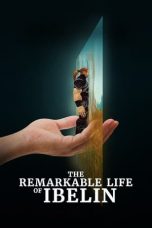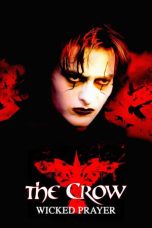- Source: Life After Death
Life After Death is the second studio album by American rapper the Notorious B.I.G., released on March 25, 1997, on Bad Boy Records and Arista Records. A double album, it was released sixteen days after his murder. It features collaborations with guest artists such as 112, Jay-Z, Lil' Kim, Mase, Bone Thugs-n-Harmony, Too $hort, Angela Winbush, D.M.C. of Run-D.M.C., R. Kelly, the Lox, and Puff Daddy. Life After Death exhibits the Notorious B.I.G. further delving into the mafioso rap subgenre. The album is a sequel to his first album, Ready to Die, and picks up where the last song, "Suicidal Thoughts", ends.
Life After Death sold 690,000 copies in its first week, peaking at No. 1 on the Billboard 200. It received widespread critical acclaim upon release and was nominated for Best Rap Album, Best Rap Solo Performance for its first single "Hypnotize", and Best Rap Performance by a Duo or Group for its second single "Mo Money Mo Problems" at the 40th Annual Grammy Awards. The album is widely considered to be one of the greatest hip hop albums of all time. In 2020, it was ranked at No. 179 on Rolling Stone magazine's list of the 500 Greatest Albums of All Time.
Background
Two and a half years before the album's release, the Notorious B.I.G., who had married Faith Evans, became East Coast's icon in the East Coast–West Coast rivalry and featured on albums by Michael Jackson and R. Kelly amongst others. The album had numerous planned release dates, but Biggie was involved in a car accident in September 1996 that delayed the finalizing of the album. It was pushed back to 1997.
As he explained on BET's Rap City, Biggie aimed to reach a wider audience with Life After Death, collaborating with a wider variety of artists than on his debut. In addition to Bad Boy labelmates Mase, the LOX and 112, and label owner Puff Daddy, guests include Jay-Z, Angela Winbush, Too Short, Lil Kim, & Bone Thugs-n-Harmony. A record with Bay Area rapper E-40 was not included on the final track listing.
"Most artists, you can tell they're working by the movement of their pen, but Big didn't have a pen and paper. So if a person walked in, they'd think there wasn't any work being done. There'd be conversations going on, the music would be blaring, there'd be smoke in the air, drinks all over the place, girls running around. You would think that a party was going on, but meanwhile Big was sitting in his little corner, just nodding." – Deric 'D-Dot' Angelettie
Production was handled by DJ Premier, Easy Mo Bee, Havoc, Buckwild, RZA, Clark Kent and members of Bad Boy's in-house production team, the Hitmen. Q-Tip submitted a beat, which Biggie enjoyed; however, the album had already been completed and turned into Bad Boy. The beat was later used for A Tribe Called Quest's song "The Love", from their 1998 album The Love Movement.
Biggie traveled to the West Coast in February 1997 to promote the album, and shoot the video for the lead single, "Hypnotize." Two weeks before its release, on March 9, he was shot four times in a drive-by shooting and later pronounced dead at Cedars-Sinai Medical Center in Los Angeles.
Critical reception
Life After Death received widespread acclaim from critics upon release. Jon Pareles of The New York Times described the album as "flaunting affluence with a leisurely swagger, midtempo grooves and calmly arrogant raps". Anthony DeCurtis of Rolling Stone magazine called it a "conscious continuation of Ready to Die", and stated "Life After Death captures crime's undeniable glamour but doesn't stint on the fear, desperation and irretrievable loss that the streets inevitably exact". Cheo Hodari Coker from the Los Angeles Times wrote that "Life After Death reflects both the dark and the heartfelt sides of the rapper's Gemini personality. It's not only a complex testament to who he was in his private life, but also a demonstration of his amazing rhyming ability. In key moments, B.I.G. does a marvelous job of surfing between accessible music fare tailored for the radio, and more challenging material that will be savored by hard-core rap fans who have long admired B.I.G.'s microphone skills. Rarely has a rapper attempted to please so many different audiences and done it so brilliantly". In a five-mic review for The Source, Michael A. Gonzales felt that it would "undoubtedly become a classic to any true hip-hop fan". Although David Browne of Entertainment Weekly was unfavorable of the album's long length, and some of its violent and materialistic content, he commended Notorious B.I.G.'s "bicoastal respect" by working with other hip-hop styles and artists from other regions of the United States.
= Retrospect
=Since its release, Life After Death has received retrospective acclaim from critics. Rob Sheffield, writing in The Rolling Stone Album Guide (2004), called it "a filler-free two-disc rush of musical bravado" and commented that the Notorious B.I.G.'s voice and lyrics were "deeper" than before. AllMusic's Jason Birchmeier wrote, "It may have taken the Notorious B.I.G. a few years to follow up his milestone debut, Ready to Die, with another album, but when he did return with Life After Death, he did so in a huge way. The ambitious album, intended as somewhat of a sequel to Ready to Die, picked up where its predecessor left off." Birchmeier further said, "Over the course of only two albums, he achieved every success imaginable, perhaps none greater than this unabashedly over-reaching success." Evan McGarvey of Stylus magazine wrote in his review, "Life After Death is a grand exercise in personal mythology, narrative sweep, and truly diverse, universal pop excellence. As a double album it is the very definition of cinematic; it essentially perfected the concept and standard in hip-hop ... Sequenced as an unpacking of sorts, the album's progression from song to song is an essay itself." In 2013, VIBE named Life After Death the greatest Hip-Hop/R&B album since 1993.
= Accolades
=(*) signifies unordered lists
Commercial performance
Life After Death was released to a significant amount of critical praise and commercial success. The album sold 690,000 copies in its first week. In 2000, the album was certified Diamond by the Recording Industry Association of America (RIAA), denoting shipment of 10 million copies (the threshold for double albums) and it has been credited as one of the best-selling rap albums of all time. It also made the largest jump to number one on the Billboard 200 chart in history, jumping from number 176 to number one in one week. Also, it spent four weeks at number one on the Top R&B/Hip-Hop Albums chart and topped the Billboard Year-End chart as a Billboard 200 for 1997.
It spent its four consecutive weeks at number one on the Billboard 200 from the weeks of April 12 to May 3, 1997, later being bombarded from the top entry by singer Mary J. Blige's third studio album, Share My World, which released on April 22.
Legacy and influence
Although released in the wake of B.I.G.'s fatal shooting, Life After Death signaled a stylistic change in gangsta rap as it crossed to the commercial mainstream. After Life After Death, Puff Daddy's Bad Boy Records continued to bring pop and gangsta rap closer together: the references to violence and drug dealing remained, as did the "gangsta" rhetoric, but the previously dark production changed to a cleaner, sample-heavy, more upbeat sound that was fashioned for the pop charts, as seen in the single "Mo Money Mo Problems". The Notorious B.I.G. is often credited with initiating this transition, as he was among the first mainstream rappers to produce albums with a calculated attempt to include both gritty and realistic gangsta narratives as well as radio-friendly productions.
"It sounded for the first time like an East Coast artist had been able to make the perfect record. It was a pop record, a radio record, a street record, a club record. It embodied every type of song that a hip-hop artist could make – would wish to make, would try to make – in one project. His death magnified the meaning, but ultimately the finished product was super-substantial." – Busta Rhymes
The majority of the album was produced by Steven "Stevie J" Jordan, Deric "D-Dot" Angelettie, Carlos "July Six" Broady, Ron Lawrence, and Nashiem Myrick. However, notable hip-hop producers such as Easy Mo Bee, DJ Premier, Havoc from Mobb Deep, and RZA from Wu-Tang Clan contributed beats.
Various artists were specifically influenced by songs on Life After Death. Evidence's "Down in New York City" is essentially "Going Back to Cali" from the perspective of a West Coast hip hop artist. Jay-Z borrows four bars from "The World Is Filled..." in his song "I Just Wanna Love U (Give It 2 Me)", as well as the chorus from his song "Squeeze first" from "Hypnotize", a line in "The Ruler's Back" from "Kick in the Door" and "You're Nobody ('Til Somebody Kills You)" on "D.O.A. (Death of Auto-Tune)". Ice Cube borrows the chorus from "Kick in the Door" for his song "Child Support". As with B.I.G.'s "I Love the Dough" Monica's 2010 song "Everything to Me" samples "I Love You More" by René & Angela. The official remix includes a verse from B.I.G. that originally appeared on "I Love the Dough". SWV sampled "Ten Crack Commandments" on the opening track "Someone" featuring B.I.G.'s former protege and friend Puff Daddy. The French rapper Rohff named his album "La Vie Avant La Mort" (Life Before Death) (2001) as a tribute to B.I.G, Joey Badass interpolated the lines 'Kick in the Door' on "Super Predator" from All-Amerikkkan Badass (2017).
Track listing
Credits adapted from Life After Death liner notes.
Disc one notes
^[a] – co-producer
"Life After Death Intro" contains sample of "Suicidal Thoughts" by the Notorious B.I.G., and "This Masquerade" by George Benson.
"Somebody's Gotta Die" contains a sample of "In the Rain" by the Dramatics.
"Hypnotize" contains a sample of "Rise" by Herb Alpert, and an interpolation of "La Di Da Di" by Slick Rick & Doug E. Fresh.
"Kick in the Door" contains a sample of "I Put a Spell on You" by Screamin' Jay Hawkins, "Unbelievable" by the Notorious B.I.G., interpolations of "Get Money" by Junior M.A.F.I.A., "Wash Yo Ass" by Martin Lawrence, and "Robby, the Cook, and 60 Gallons of Booze" by Louis & Bebe Barron.
"I Love the Dough" contains a sample and an interpolation of "I Love You More" by René & Angela, and "Da Ya Think I'm Sexy?" by Rod Stewart.
"What's Beef?" contains a sample of "I'm Glad You're Mine" by Al Green and "Close to You" by Richard Evans.
"B.I.G. Interlude" contains a sample of "P.S.K. What Does It Mean?" by Schooly D.
"Mo Money Mo Problems" contains a sample of "I'm Coming Out" by Diana Ross.
"Niggas Bleed" contains a sample of "Hey, Who Really Cares" by the Whispers.
"I Got a Story to Tell" contains a sample of "I'm Glad You're Mine" by Al Green.
Disc two notes
"Notorious Thugs" contains a sample of "More Than Love" by Ohio Players.
"Miss U" contains an interpolation of "Missing You" by Diana Ross.
"Another" contains a sample and interpolation of "Another Man" by Barbara Mason.
"Going Back to Cali" contains a sample of "More Bounce to the Ounce" by Zapp.
"Ten Crack Commandments" contains samples of "Vallarta" by Les McCann, and "Shut 'Em Down" by Public Enemy.
"Playa Hater" contains a sample and interpolation of "Hey Love" by the Delfonics.
"Nasty Boy" contains a sample of "Cavern" by Liquid Liquid.
"Sky's the Limit" contains a sample of "My Flame" by Bobby Caldwell.
"The World Is Filled..." contains a sample of "Space Talk" by Asha Puthli, and "The What" by the Notorious B.I.G.
"My Downfall" contains a sample of "For the Good Times" by Al Green and an interpolation of "You're All I Need to Get By" by Marvin Gaye and Tammi Terrell.
"Long Kiss Goodnight" contains a sample of "The Letter" by Al Green.
Personnel
= Performers
== Production
=Charts
Certifications
See also
List of best-selling albums in the United States
List of number-one albums of 1997 (U.S.)
List of number-one R&B albums of 1997 (U.S.)
Billboard Year-End
References
External links
Life After Death at Discogs
The Making of Life After Death at XXL
Playing God: Life After Death at Stylus
Kata Kunci Pencarian:
- Death rock
- Kehidupan setelah kematian
- The Notorious B.I.G.
- Dewata
- Jake Paul
- Keterlupaan abadi
- Pembusukan mayat
- Kesadaran setelah kematian
- Anihilasionisme
- Mazmur 23
- Life After Death
- Afterlife
- Life After Death (disambiguation)
- Dead like Me: Life After Death
- Life After Death (TV series)
- Life After Life (novel)
- Life After Death (TobyMac album)
- Baháʼí Faith on life after death
- Tyler Henry
- Death and Life
The Dark Sisters (2023)
No More Posts Available.
No more pages to load.









